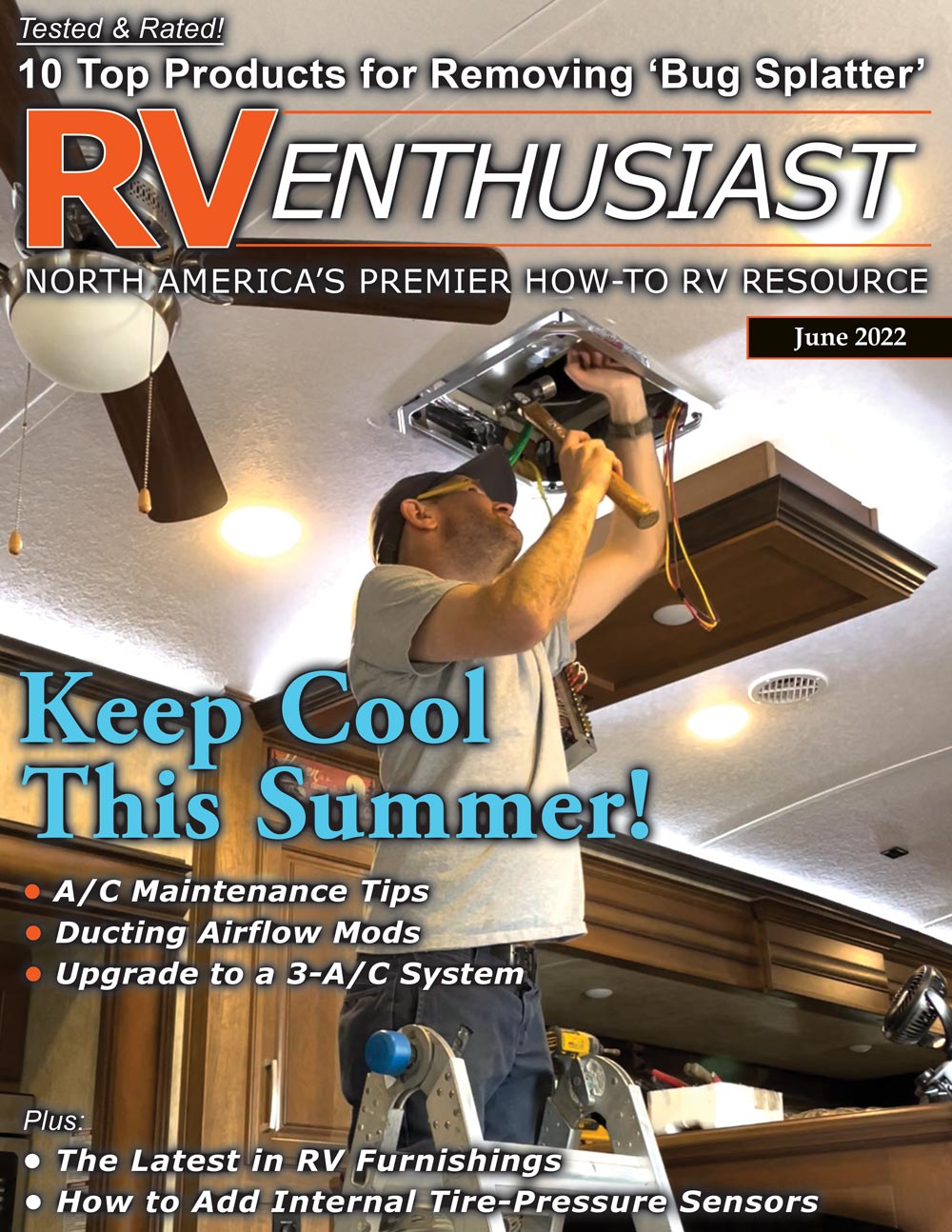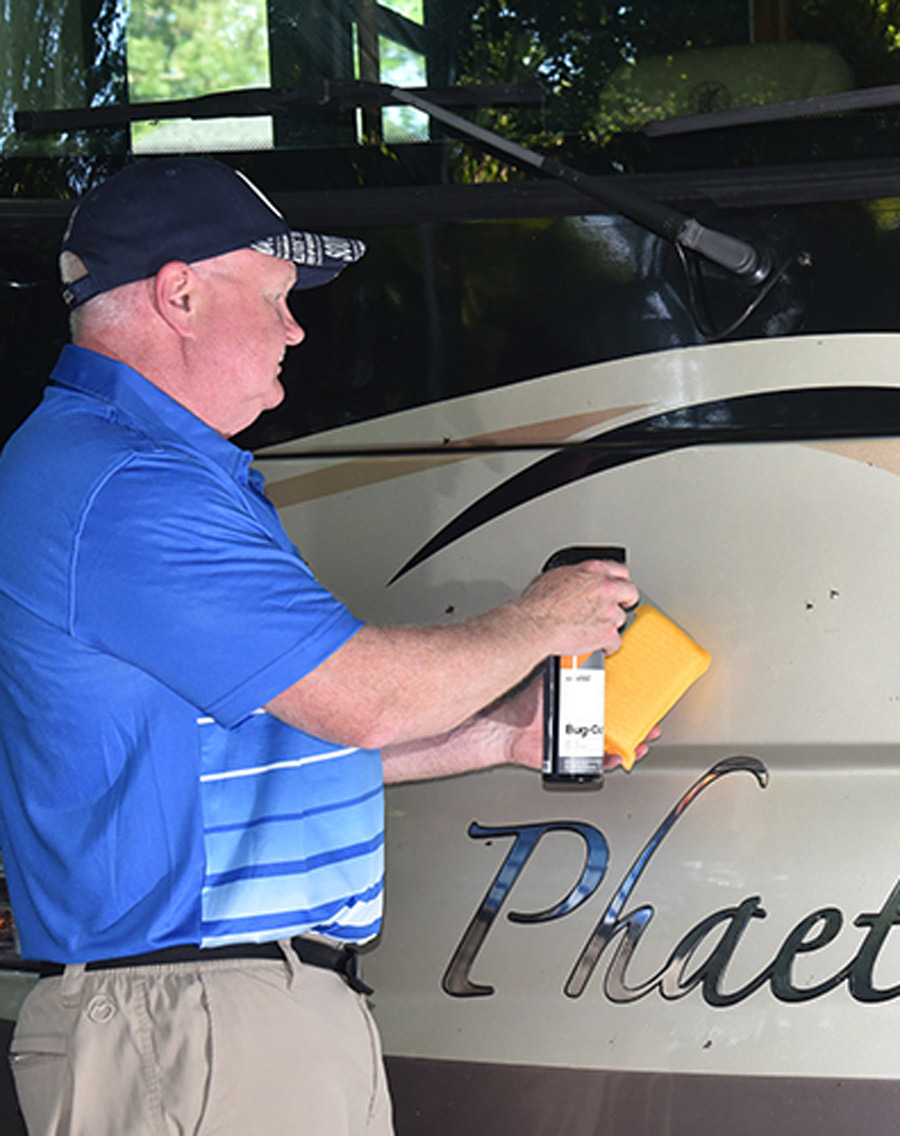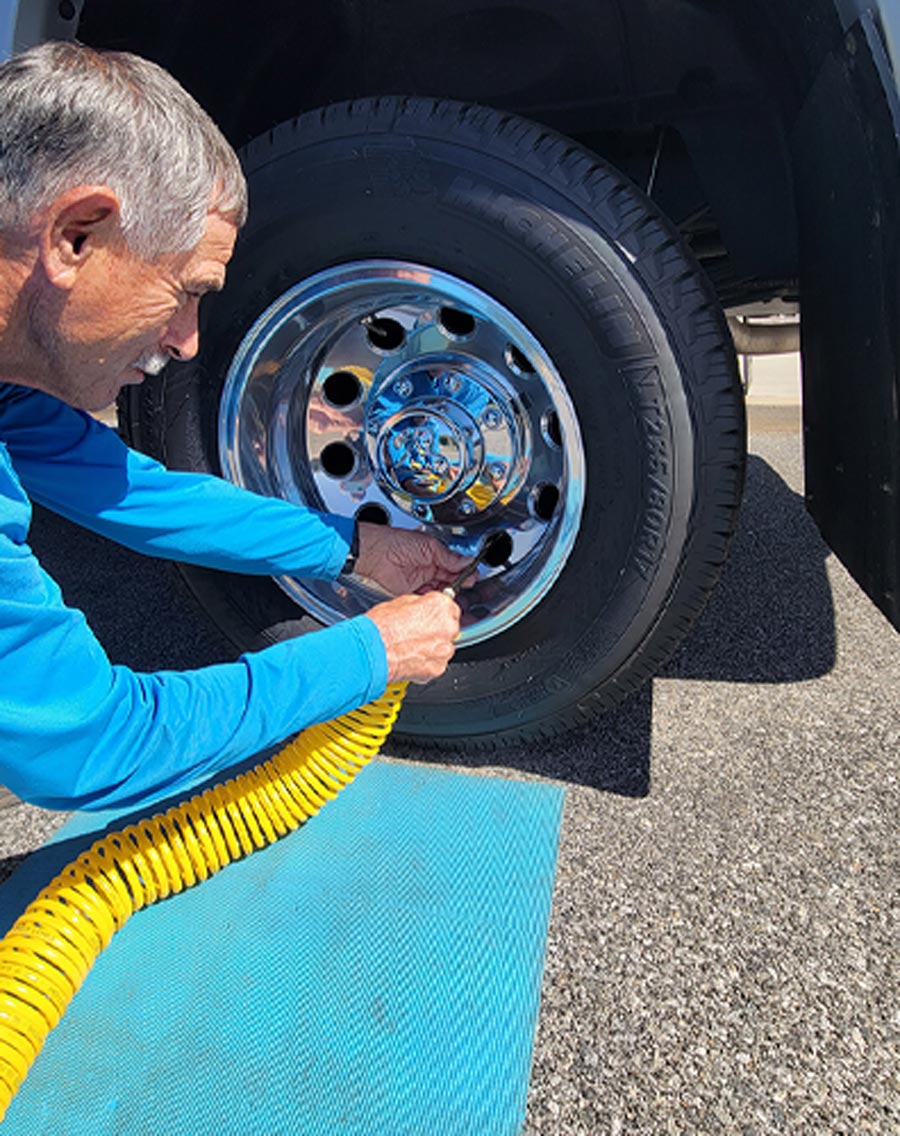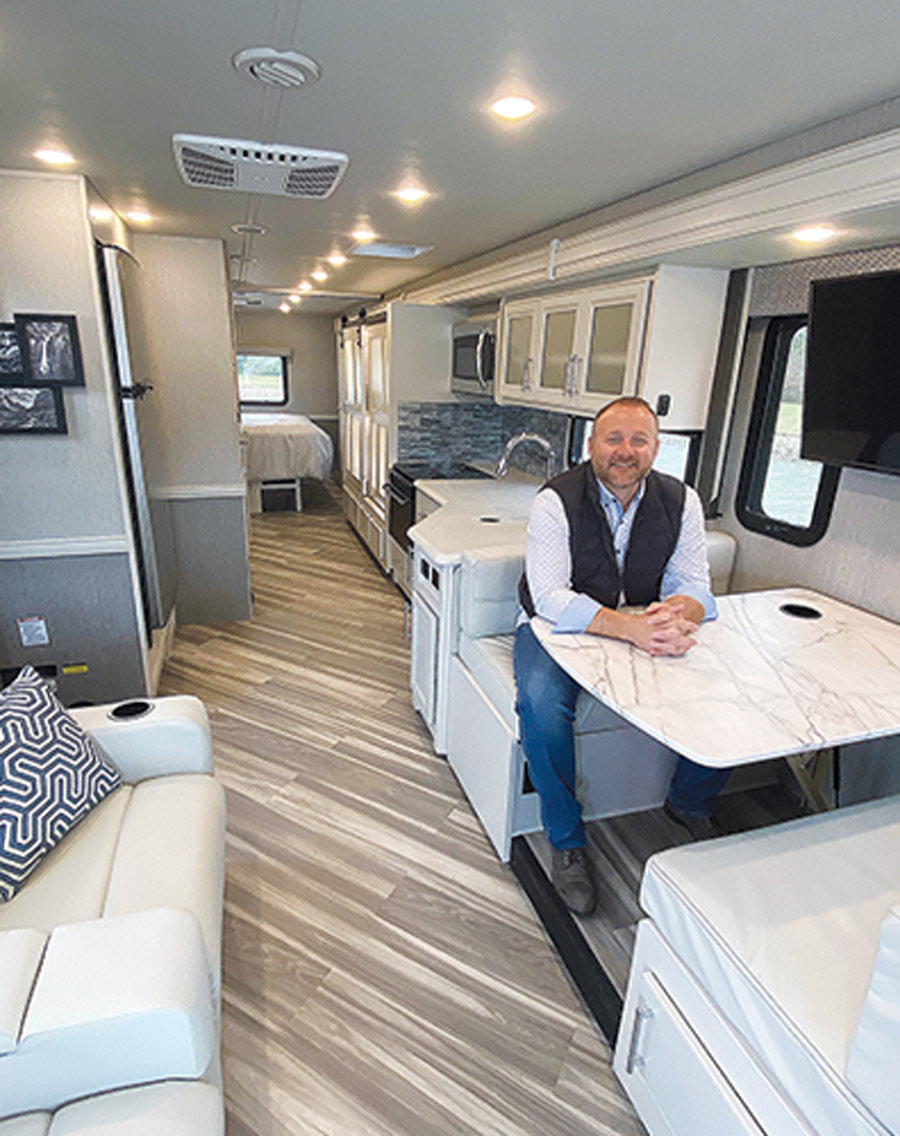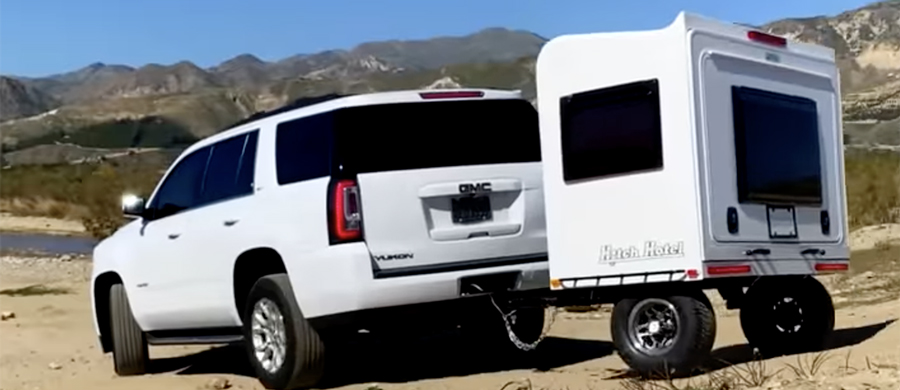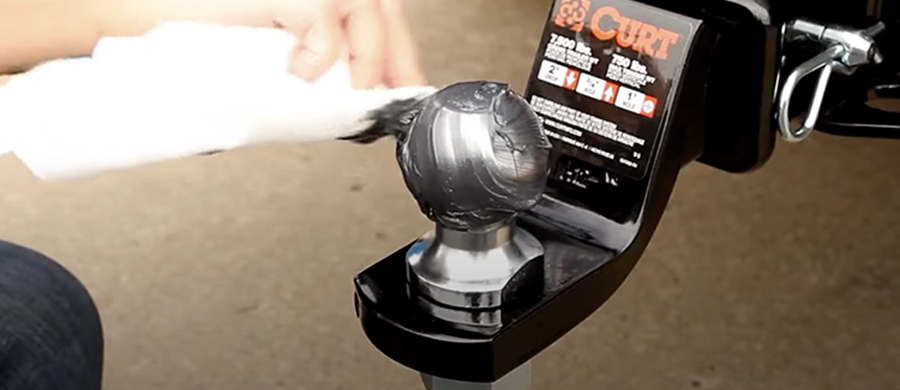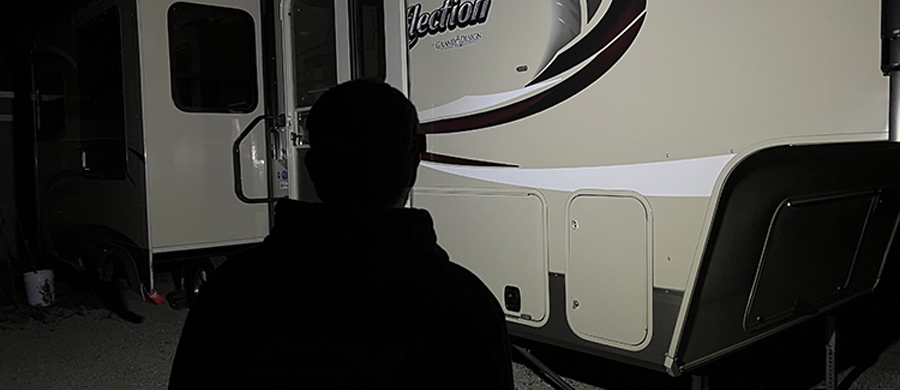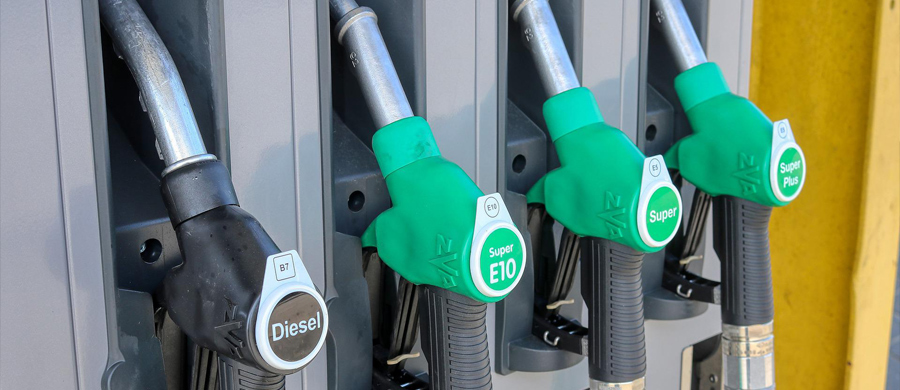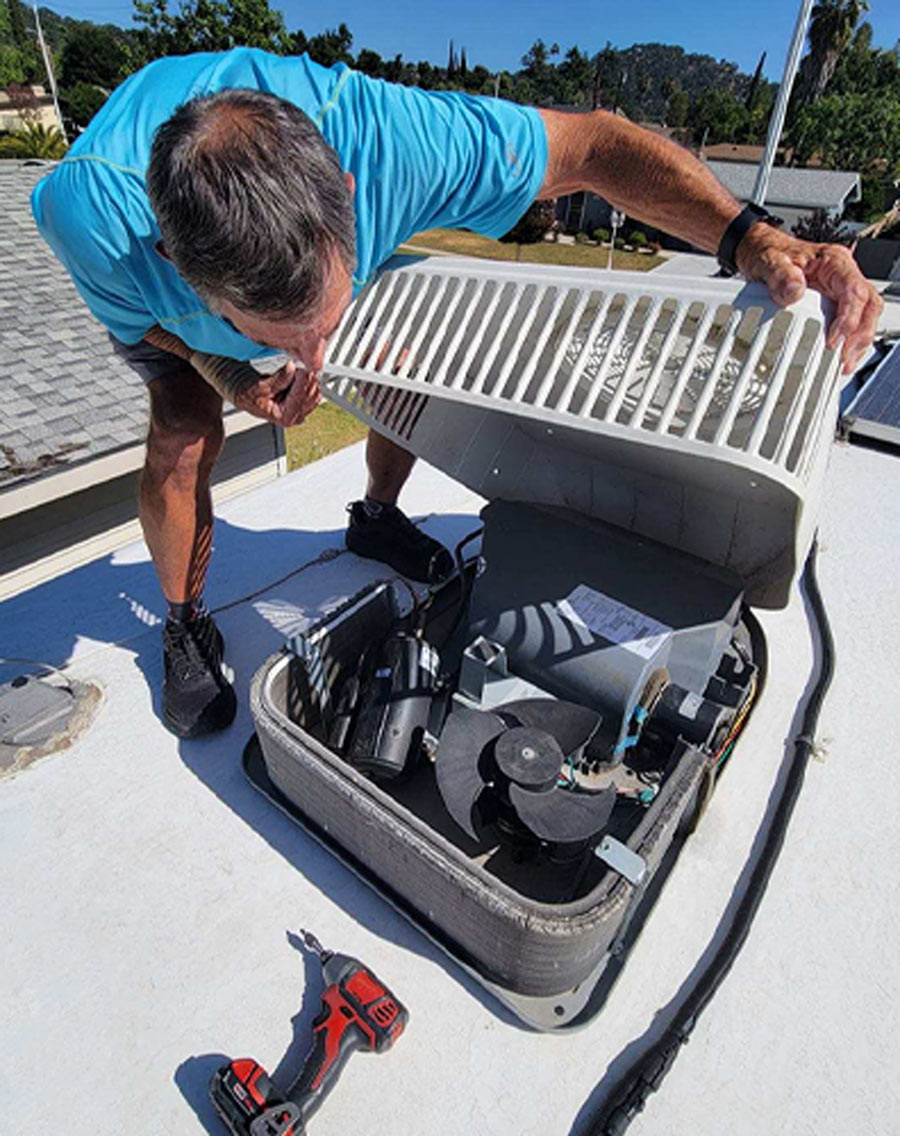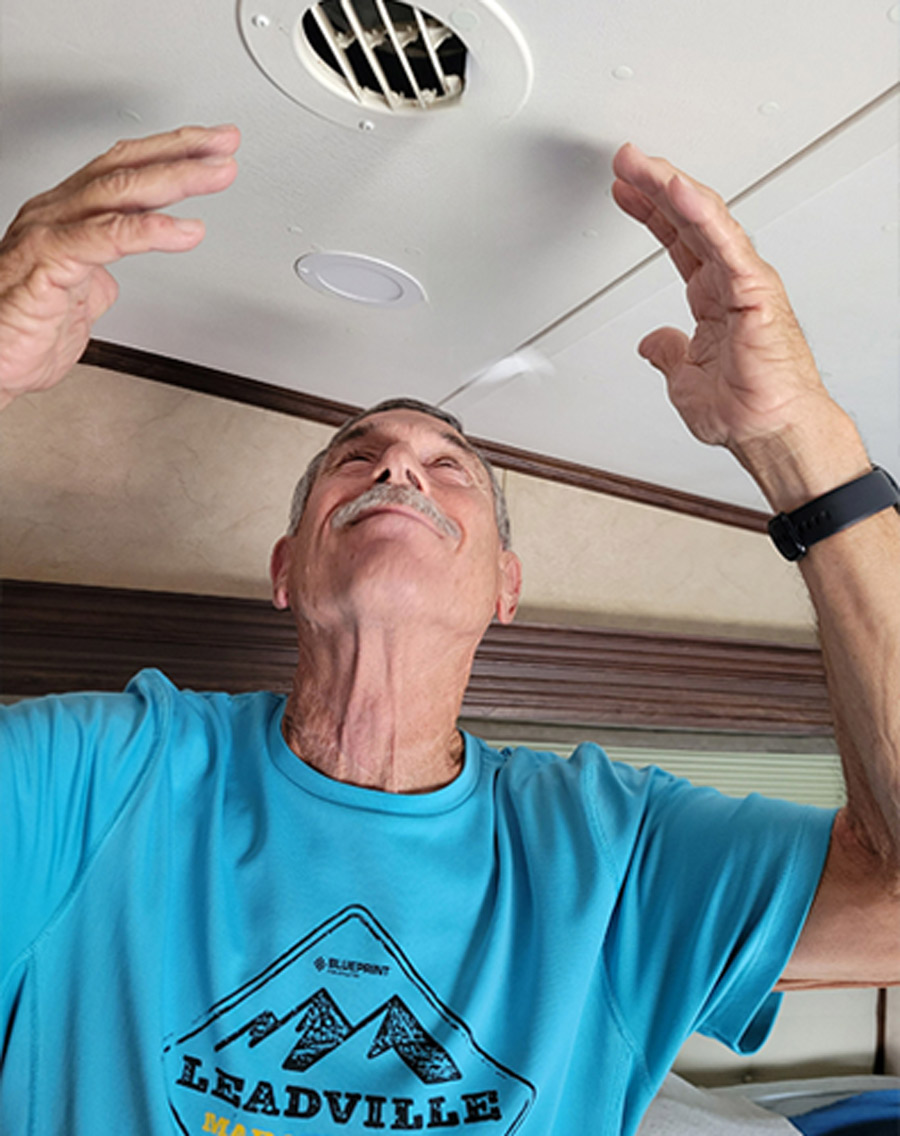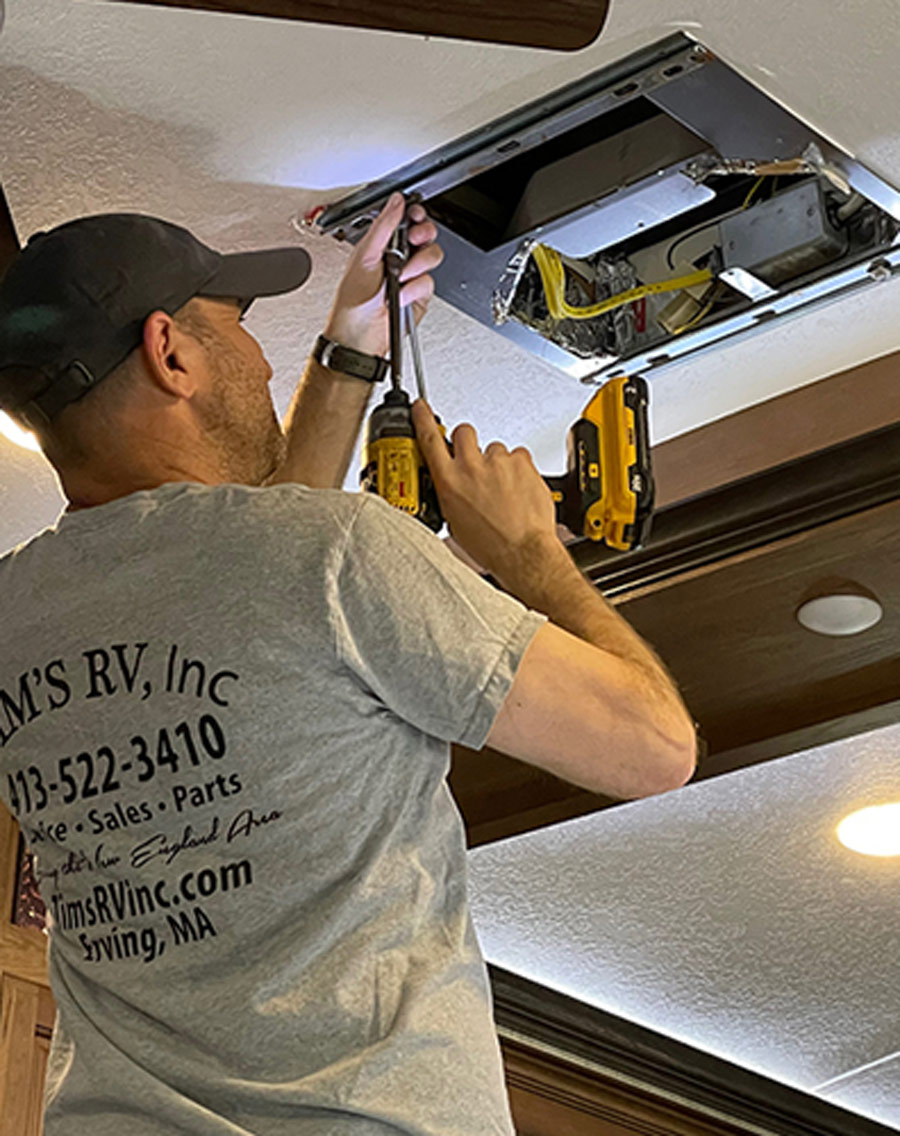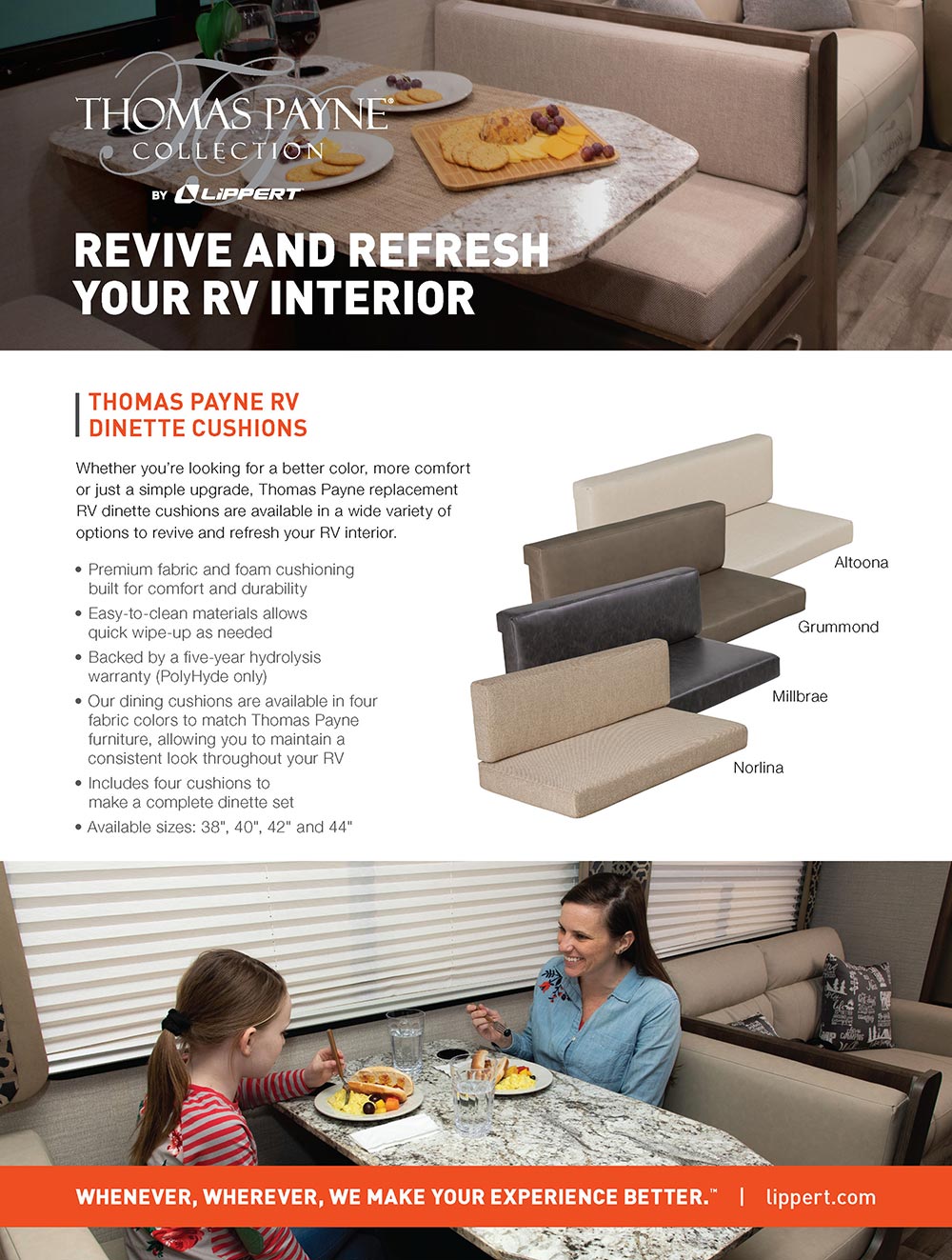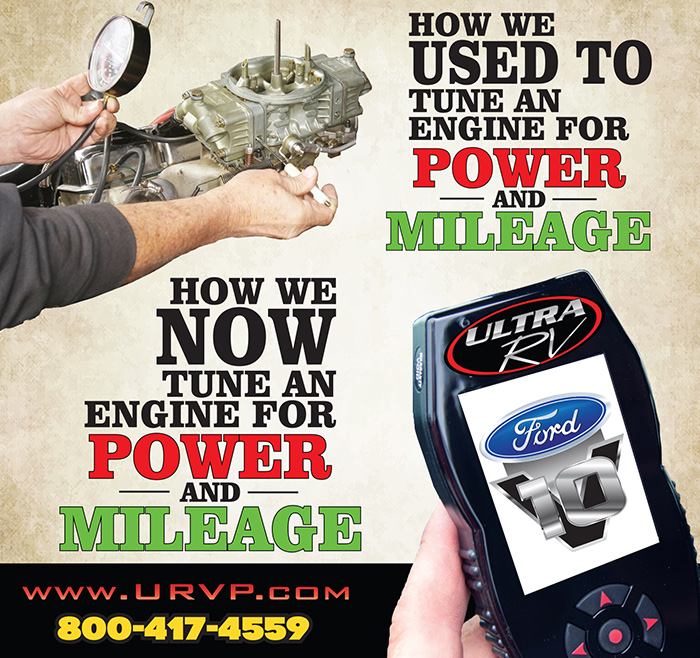Subscriber Access Only
Special Offer
Get 1 year of RV Enthusiast Magazine for just $9.99
Unlock My Offer No ThanksAlready a subscriber? Click here to access full issues.

Summer’s great — but the same weather that draws RVers to the outdoors is prime season for insects and, well, their inevitable splatter across the front of our rigs. Unfortunately, removing them can tax even the best cleaners. We tested — and rated — 10 top products for keeping RVs clean of bug residue during and after travels.
Replacing the hard-to-reach factory valve stems in dual rear wheels with Borg extensions civilizes the process of checking and inflating tires. Unfortunately, the factory tire-pressure-monitoring system is attached to the original valve stems. Here’s a cool modification to upgrade to extensions and keep the factory TPMS.
Pet-friendly fabrics, easy-glide seating, even heated towel racks — the evolving state of RV interior comfort continues to ratchet up in a big way. Here’s a look at what suppliers are creating and OEMs will be introducing this summer as RV manufacturers look to differentiate their products in a crowded marketplace.

The “dog days” of summer scream for relief — and that means air-conditioning. Unfortunately, many RV owners ignore their upkeep until it’s time to flip a switch and expect it to work. Cleaning the rooftop A/C filter, condenser and evaporator will restore maximum cooling — and the process is simpler than you might imagine.
Rooftop air-conditioners oftentimes don’t live up to their capabilities and owner expectations — a situation that has worsened since the inception of ducted air distribution in the roof. This do-it-yourself project to increase airflow will improve efficiency — and drop interior temperatures more quickly.
If you’ve got a larger rig, you know full well that sometimes even dual A/C units running at peak performance simply won’t get the job done. We modified our project Montana fifth wheel with the new Coleman-Mach three-unit air-conditioning system — along with logical duct repairs — and reaped a big change in cooling efficiency.
(805) 320-6909
[email protected]
EDITOR – Bruce Hampson
(574) 584-4616
[email protected]
TECHNICAL DIRECTOR
BILL GEHR
(805) 340-5015
[email protected]
ART DIRECTOR – MIKE ACCUARDI
[email protected]
26362 Douglas ave., Elkhart, in 46514
 AFFILIATE NOTICE: RVE Media Group LLC provides links to vendors and products, such as an Amazon Associates account, for informational purposes, but that may provide a commission if you purchase from that link. We often label these links with language that provides transparency if the destination is an advertiser, affiliate, or partner. Products are often provided to RVE at little/no cost for editorial testing purposes by vendors/suppliers. Under no circumstances does this affect the results of the test or install as published in RV Enthusiast. Sponsored content is identified as such directly on the content.
AFFILIATE NOTICE: RVE Media Group LLC provides links to vendors and products, such as an Amazon Associates account, for informational purposes, but that may provide a commission if you purchase from that link. We often label these links with language that provides transparency if the destination is an advertiser, affiliate, or partner. Products are often provided to RVE at little/no cost for editorial testing purposes by vendors/suppliers. Under no circumstances does this affect the results of the test or install as published in RV Enthusiast. Sponsored content is identified as such directly on the content.
PRIVACY POLICY: Our complete privacy policy can be found at https://rventhusiast.com/privacy-policy/
ometimes a little knowledge is a dangerous thing.
I was reminded of this recently while perusing one of the numerous RV-centric groups on social media. One post that caught my eye was a somewhat dubious claim that the recent runup in prices of diesel exhaust fluid — DEF — was attributable to possible manipulation by a major stockholder in both a certain railroad as well as a big manufacturer of electric vehicles. Where the author crossed the line, in my opinion, was drawing an inference that pressure was being exerted on one stock in hopes of propping up the other.
Have I lost you yet? Perhaps a bit of background is in order.
When it comes to RVing, there’s really no substitute for diesel power. Whether it’s a diesel-pusher motorhome or diesel-powered pickup towing a fifth wheel or travel trailer, the torque capabilities of a diesel engine — along with the attendant upgrades to drivetrains and suspensions that are usually part and parcel to diesel powerplants — make it perfect for moving heavy RVs.
Sponsored Content
Protect Your Lifestyle with the Right Service Contract
What should you look for? Here are a few differentiators between extended warranty providers and a few industry “best practices” for getting a claim approved.
Top 3 Extended Warranty Differentiators
1) Claims Department Staffing
To begin with, look for a corporation that has an in-house claims department — larger organizations farm out the claims process, reducing customer service. In-house claims adjusters reduce the approval process time by leveraging combined years of experience and have direct contact with leadership for escalations and increased dollar thresholds for faster payment processing. Having in-house administration also increases the likelihood you get the same adjuster with knowledge of your unit/past problems. Ensure the hours of operation are 24/7 in the United States, with the ability to talk to someone and not just upload documents. An experienced, well-seasoned staff also will know labor rates and replacement part costs across the country — which can mitigate repair facilities overcharging the customer.

The Hitch Hotel was created in 2018 by a father to allow his son to safely transport a bicycle. Originally, it was essentially a waterproof fiberglass box that connected with a vehicle’s hitch receiver. As reported in newatlas.com, some cars could handle the weight, while others couldn’t — so, the team behind the concept added wheels, creating the Hitch Hotel Traveler.The tiny, versatile trailer utilizes an underbody power-coated frame with 10-inch wheels and tires (rated to 80 mph), and fold-out legs to support the structure. A patent-pending design allows the front A-frame/jackstand to fold up against the unit when not in use, reducing storage needs to just 39 inches long and 6 feet high.
Weighing in at under 700 pounds, the Traveler has a hitch weight of less than 120 pounds and is rated for a 1,500-pound total capacity. When collapsed for travel, it has a volume of about 1.7 cubic meters; opened campside, it provides about 4 cubic meters of carpeted and insulated interior space — enough room for two adults. A removable exterior storage box and spare tire come standard. The unit retails for less than $6,000. For more information, go to hitchhotel.com.
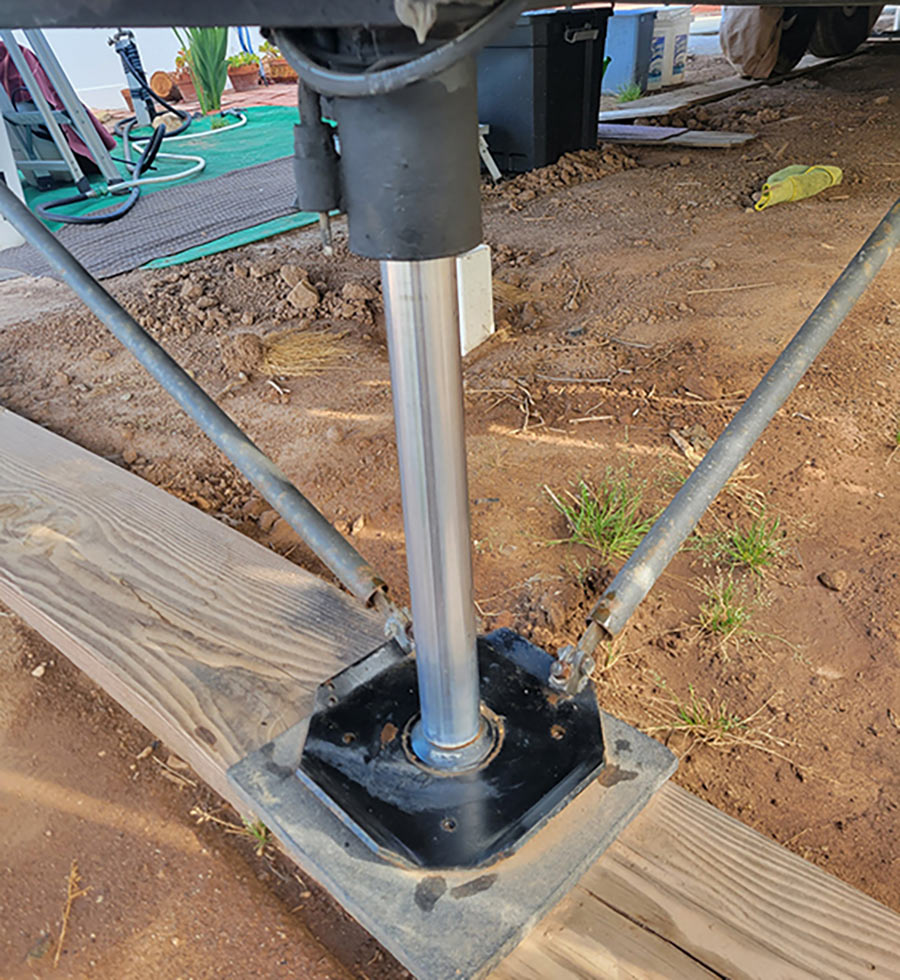
— Brian Hunt
Brian, since I have the same system on my fifth wheel, I have become very familiar with the operation of the Bigfoot components. There was an update on both the keypad and the control board several years back, which eliminated the rear Leveling Sensor. Because of the rigid frame used by some manufacturers (like your Carriage), the rear Leveling Sensor was eliminated because it did not work correctly. If you have not eliminated that sensor, now is the time to do it, and you’ll need to update the control board and keypad. If you already updated the system, it’s likely the problem lies with the control board. The keypad simply tells the control board what to do. However, having said that, I would replace both the control board and the keypad for better reliability.
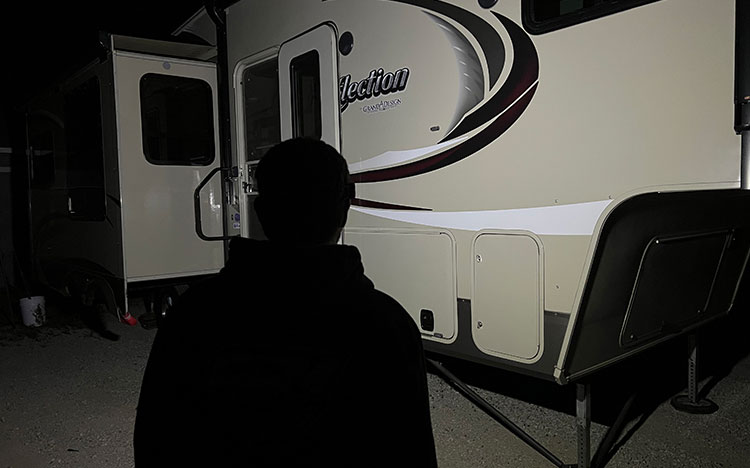
flashlight is probably the most common tool found in RVs. There are dozens of uses for extra portable light, and flashlights make it possible to navigate dark places like inside storage areas, engine compartments, sidewalks — you get the picture. Unfortunately, humans only have two hands, so working on projects (or carrying groceries) where extra light is needed can be frustrating when having to use one hand the hold a flashlight. Headlamps, though, are practical tools; just ask outdoorspeople who attach them to their hats or foreheads to move around at night.I’ve used headlamps for years, and most of them are unwieldly and only provide basic, focused lighting — not to mention wrestling with drooping headbands. But that’s before the All Perspectives Induction Headlamp came on the scene. You have got to love the names overseas companies dream up.
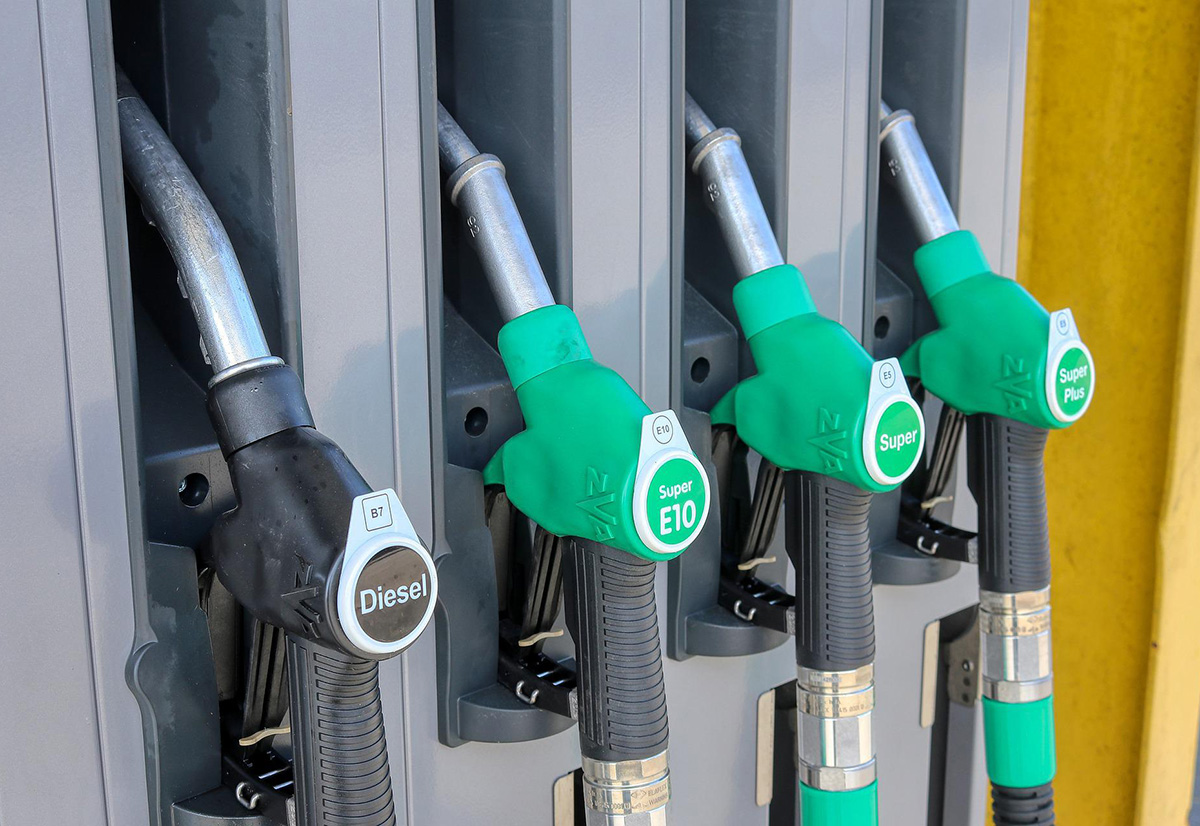
he resiliency of the RV lifestyle is astonishing. While the country — and the world, for that matter — have been plagued with episodes of bad news during the past few years, people have flocked to dealers’ lots in droves to buy new and used RVs. The other day I drove past a local RV dealership and the lot was crawling with potential buyers looking at new motorhomes and fifth wheels. Obviously, buyers are still motivated.
One can only surmise that the RV lifestyle is a great way to escape the constant bombardment of bad news and instill a little happiness into our lives during stressful times. We have endured a nasty pandemic (which has subsided, thankfully), crippling supply shortages, economic hardships, labor shortages, skyrocketing fuel prices, vehicle service issues, difficulty making RV park reservations (and when available, big increases in daily rates), runaway inflation and, now, a war in eastern Europe that will continue to impact the world for a long time. Yet people are still partaking in the RV lifestyle.


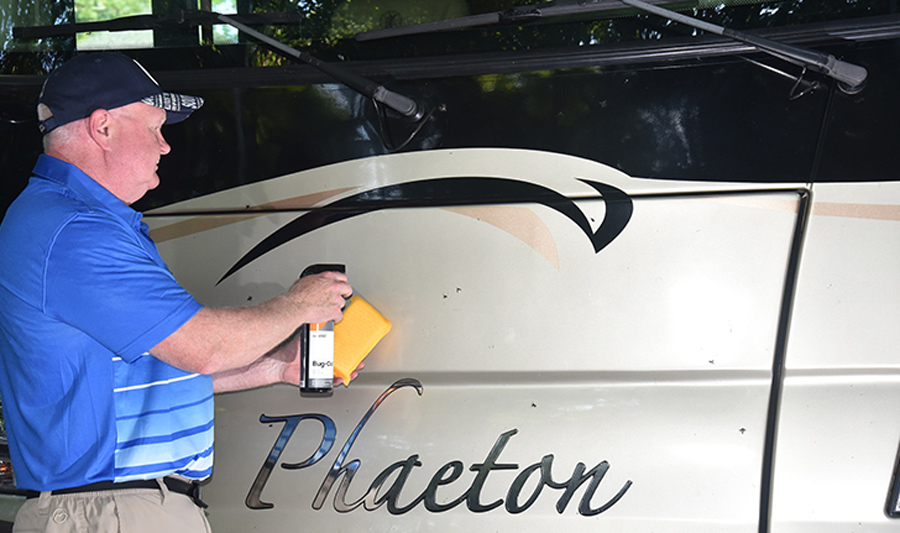
aking our motorhome out for vacation has to be the highlight of the year for us — and everyone else we know with an RV. If you’re like us, you spend weeks planning the trip and days packing and getting ready. After driving all day, you set up camp and are ready to relax and enjoy yourself away from the daily grind back at home — but after walking around your RV and or tow vehicle, you notice that it is covered with a thick, unsightly layer of bugs. It’s an unfortunate part of the camping season — the same weather that draws us to the outdoors is prime season for insects, and for many their “cycle of life” oftentimes ends across the front of our rigs.
If you are one of those people who prefers to keep your rig clean and shiny, you know you can’t leave those bugs on all week, drying and etching the paint, so out comes the water hose and your bug cleaner of choice. As you start cleaning, you notice the whole front of the RV and tow vehicle as well as the windshield are covered in bugs.
What a mess.
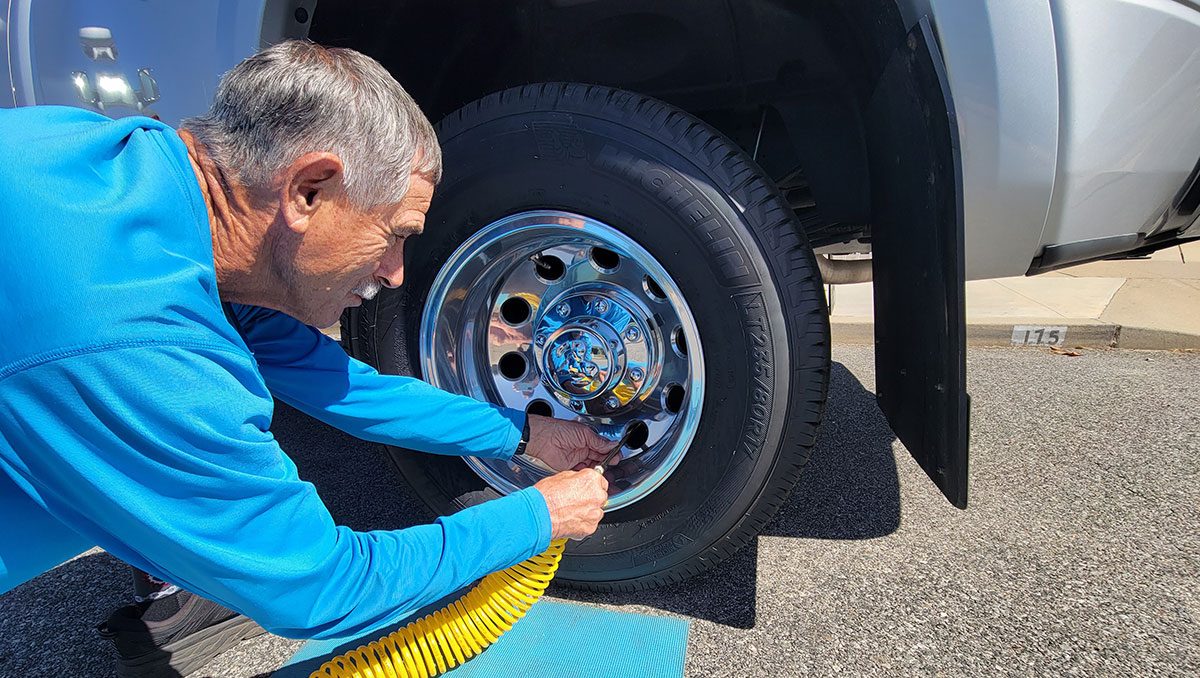


here’s nothing exotic about airing up tires. No experience is necessary and there is a plethora of tools available to get the job done. The learning curve — which is short — started for most of us by putting air in our bicycle tires when we were young kids. The process hasn’t changed much, other than the availability of more sophisticated and accurate methods for checking pressure. So, what is there to say about inflating tires other than maintaining the proper pressure for the load?
Well, nothing — unless you own a dually truck.
Reaching the inner valve stem on dual-rear-drive trucks and motorhomes can be frustrating, especially if the stems wiggle around when trying to push an air chuck onto the Schrader valve. Using a dual head air chuck helps, but losing more air than you put in during the process can produce a colorful vocabulary — not to mention the discomfort of squirming on the ground, front and center with your wheels. A good solution is to install Borg Dually Valve extensions, which will change your prospective on airing up dual-rear-wheel tires — and you’ll lose the potty mouth.
Clearsource
Lance Camper
Lippert
United States Warranty Corporation
Way Interglobal
Advertise Today


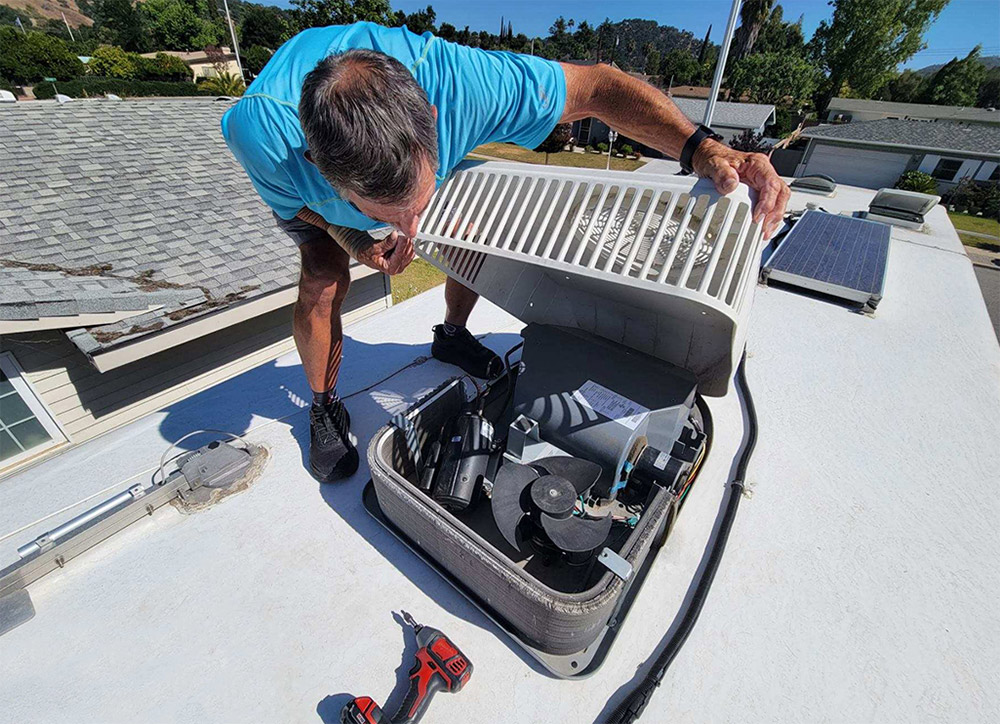

he hot days of summer lure RVers to the road, visiting places where the weather makes it possible to enjoy the outdoors, including participating in water sports and other activities. Of course, it also raises the temperature inside the RV — which can quickly end all that outdoor joy when retreating to the inside. Fortunately, almost all RVs are equipped with air-conditioning to help moderate the inside temperature — but many owners don’t used their air-conditioner(s) during the other seasons and simply turn it on when temperatures rise and expect them to work.
And sometimes, they don’t.
I am also guilty of neglecting my air-conditioner — and I know better. However, I didn’t use my air-conditioner very often during the last three or four years, so there was a huge build-up of grime and dirt on everything from the evaporator to the condenser — leaves, dirt and cobwebs seemed to be everywhere. Very few RVs come with an adequate manual for the appliances (including the air- conditioner) describing in detail proper maintenance procedures. At the very best, the owner’s manual suggests that you take your RV to a certified dealership for service. Fortunately, servicing (think cleaning) your air-conditioner is accomplished easily without specialty tools except for maybe for the fin straightening tool.


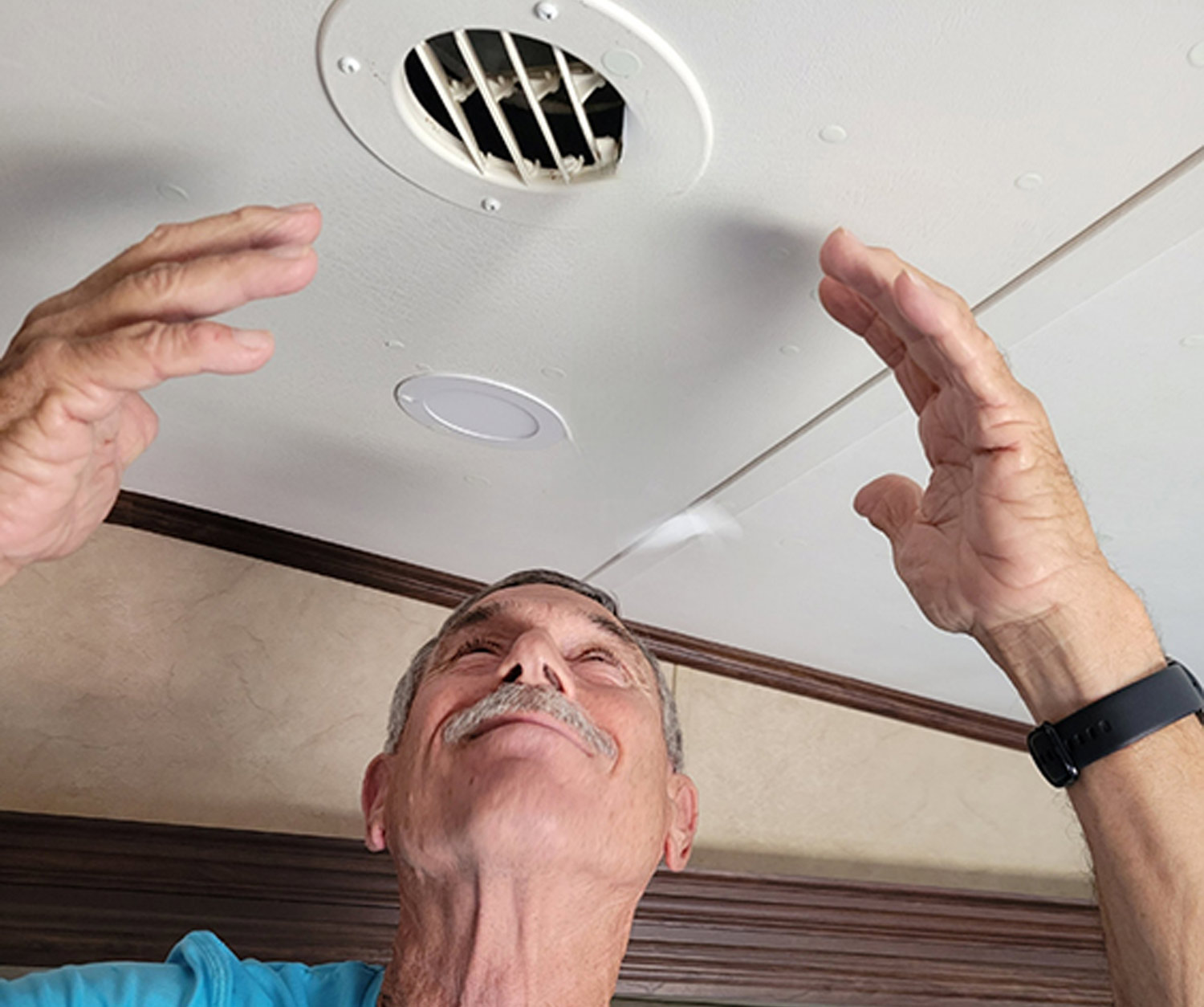

hen it comes to acknowledging which components in a modern RV have best aided in maintaining comfort at camp, it would be tough to overshadow air-conditioning, especially during prime summer months when the weather is great outdoors — but is stifling inside an RV. In many cases, however, modern RV air-conditioners do not live up to their potential — a situation that has amplified since the inception of ducted air distribution in the roof.
In theory, moving air through a network of ducting and registers strategically placed throughout the interior of any RV should balance out temperature extremes. But the biggest challenge is forcing the air into the ducting without sacrificing flow, something that is painfully less efficient in many roof-air installations. I personally like to upgrade everything possible in my 2011 Carriage Cameo fifth wheel to make life easier, but for 10 years the performance of my rooftop air-conditioner has bugged me because it just does not have the airflow that I think it should. Worse yet is the obnoxious loud noise that drowns out the sound from the TV, which is right below the air-conditioner ceiling assembly.



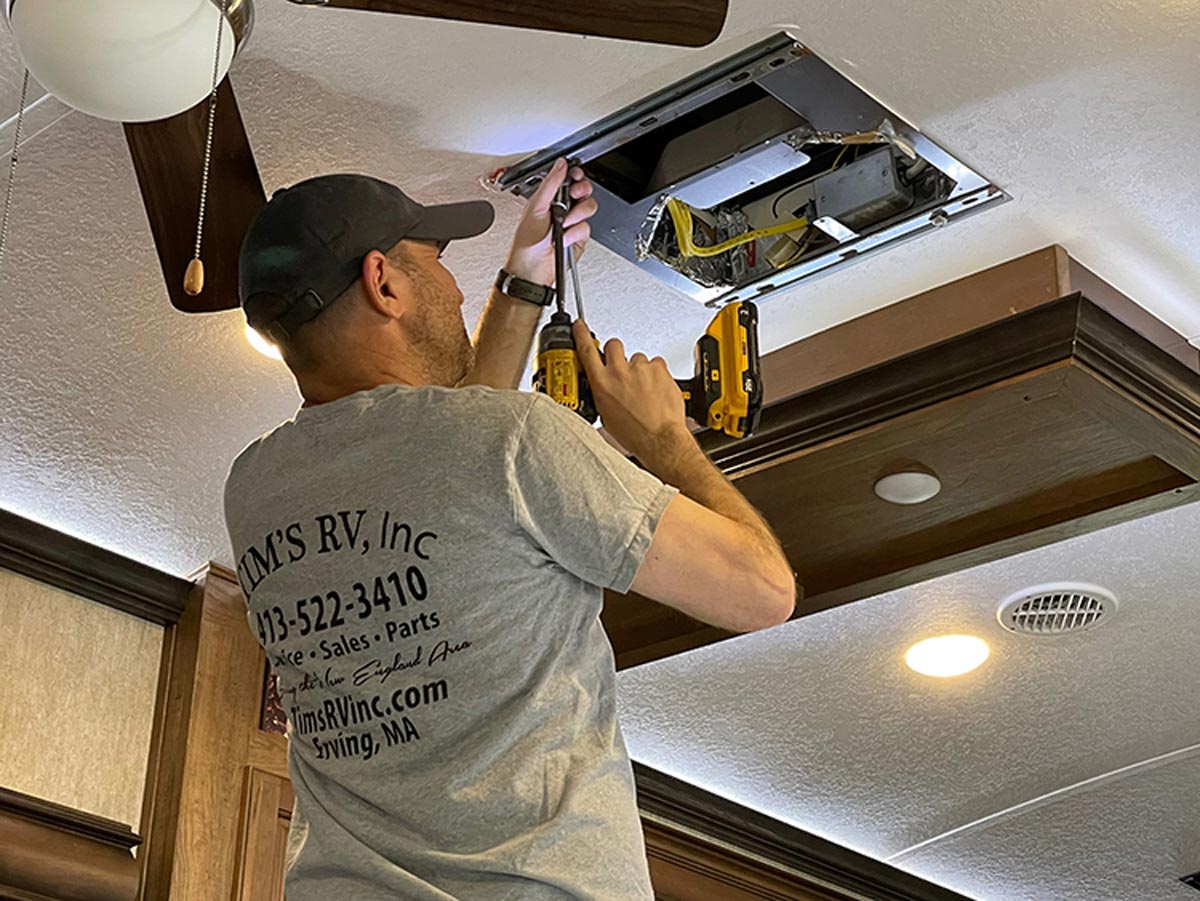

ummer is a funny time of the year. It’s a season we all look forward to, then — once set up with the sun shining down on our RVs — we remember what we didn’t like about it.
Okay, that sounds harsher than it should. Summer really is prime season for camping — but when you are set up out in the open and there’s a heat index approaching 100 degrees F, it can be tough to get comfortable inside. By noon, when it’s hot enough to pour a shoo-fly pie into a bucket, even two factory-installed air-conditioners running at full tilt won’t bring the interior of most bigger RVs down below 80 degrees or so. Cooler than outside? Most definitely — but still not exactly comfortable. When I’m working on a deadline inside my 40-foot Keystone Montana 3710FL, I don’t mind sweating in the figurative sense, but I draw the line at sweating physically. This fifth wheel came from the factory with a 15,000 Btu A/C with heat pump and a 13,500 Btu unit, but they just couldn’t keep up in triple-digit climates.
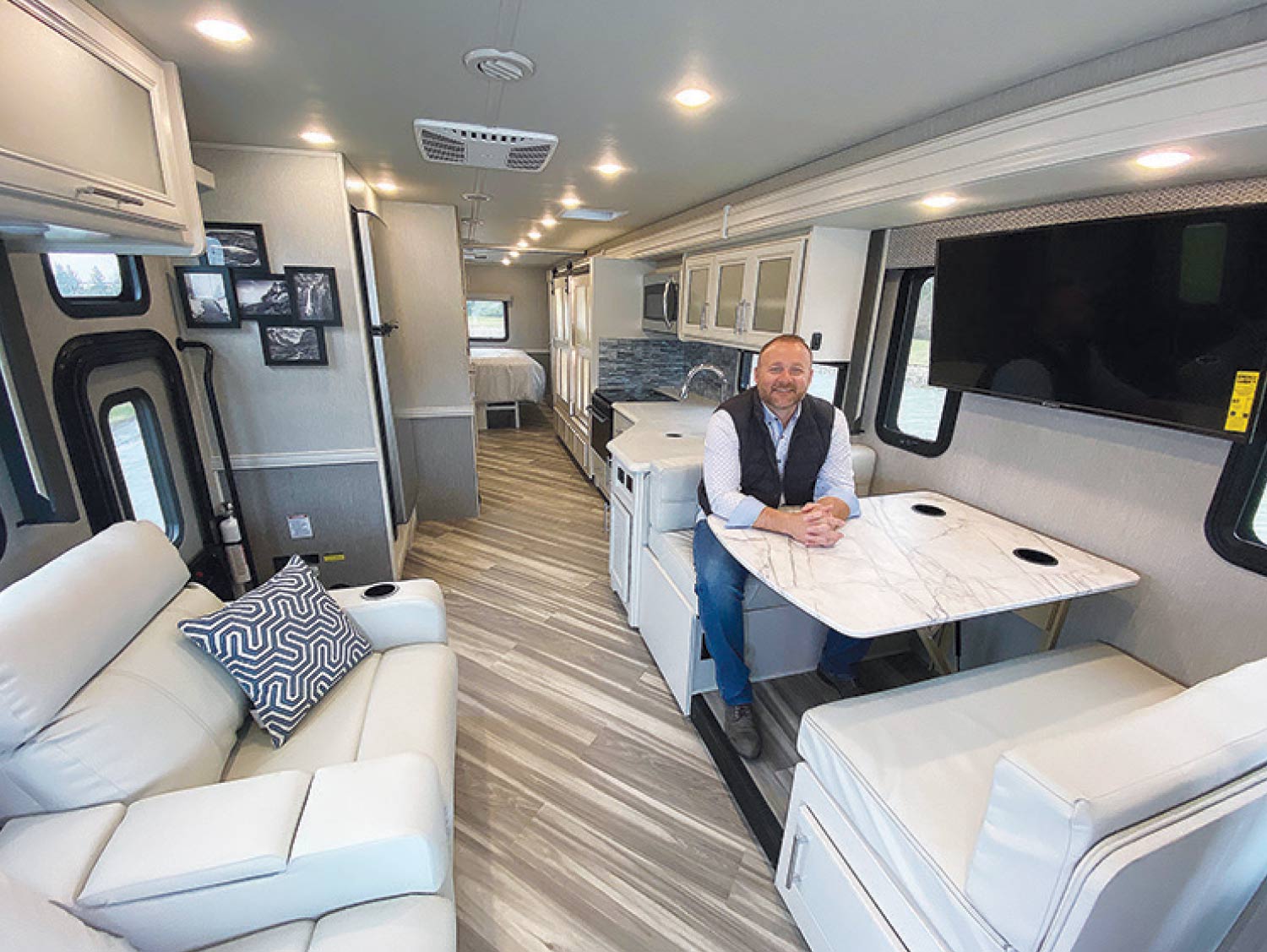
ith its back-to-back record sales years, the growing RV industry has not only enjoyed a newfound popularity among outdoor RV enthusiasts but it has also shed an even brighter light on how RV interiors have reached astonishing levels of performance.
Indeed, few would argue that the industry’s interior design segment has grown its supplier base, material choices, color palettes and design decisions to the point where form and style are just as important as functionality, durability and comfort. In fact, this burgeoning RV niche attracts new suppliers every year, many of which were previously dedicated to the residential market.
The newcomers to this niche, it could be argued, also are on the scene because savvy OEMs now see opportunities in targeting specific demographics beyond traditional price points. These can include hip, young design offerings for hip, young buyers, or more conservative classic styles for older buyers — and everything in between. And let’s not forget that the push to make RVs lighter, more fuel efficient and environmentally friendly also has resulted in myriad new materials, films and coatings that have opened up a new age of color and variety.



